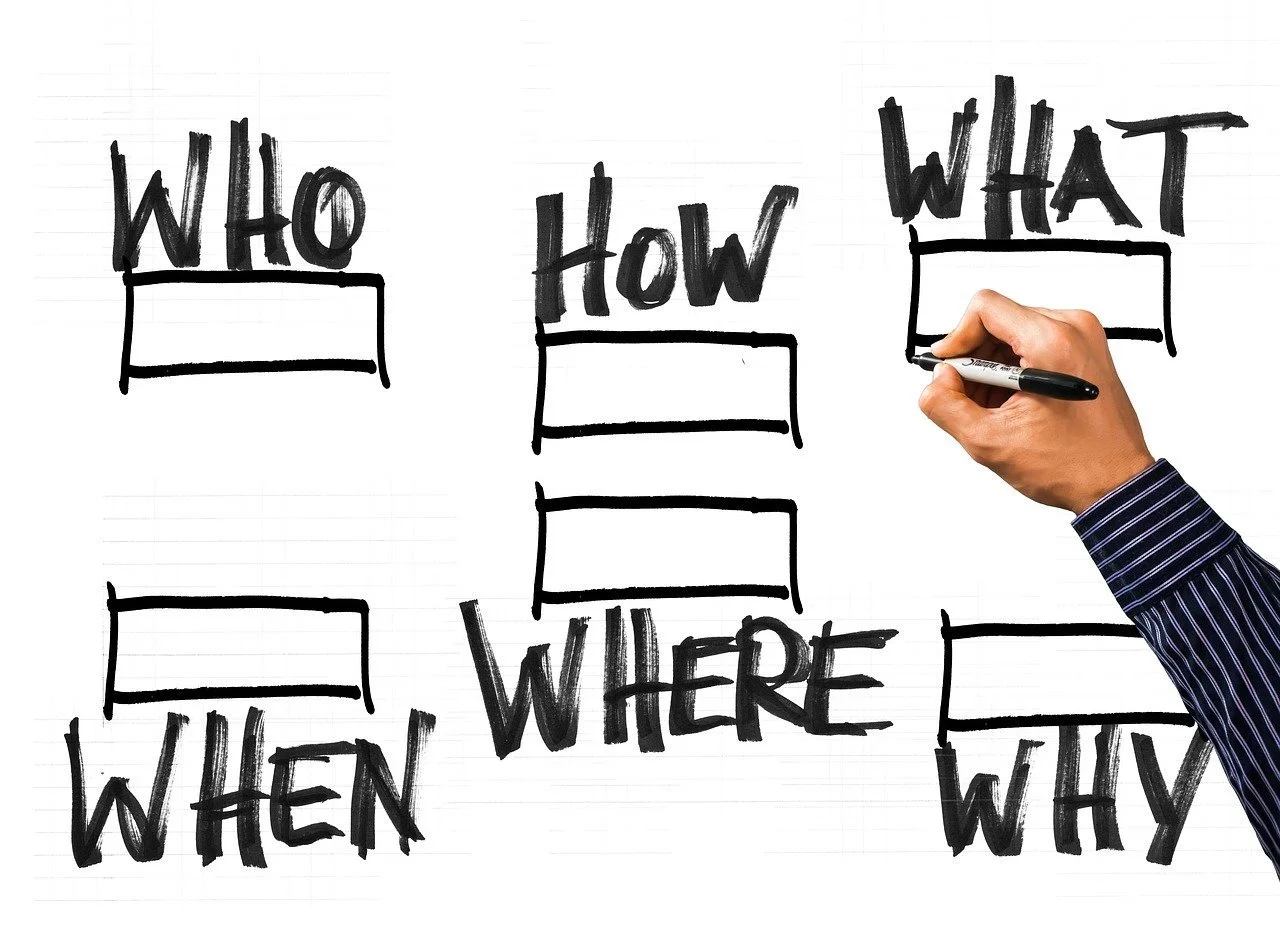Getting Practical for 2026: How to Choose Your Marketing & BD Strategy and Tactics
A practical guide for choosing marketing & BD strategy and tactics the practice will actually use in 2026.
This is Part 2 in our 2026 planning series. Part 1 covered the marketing and business development inventory—what’s in place, what’s working, and where the gaps are.
If you missed it, read it here: What to review before you plan your 2026 marketing & BD strategy. Next up: Budgeting for 2026, then Putting It All Together.
Once the inventory is complete, the firm has a clearer picture: what’s current, what’s dated, where time and money went, and how the market is changing. This article takes that output and shows how to choose the marketing and business development strategy and tactics the practice will actually use in 2026—with named responsibility, straightforward checks, and a sensible limit on how much runs at once. It’s written for practices that don’t live in spreadsheets or quarters: plain English, practical moves.
Two reminders before choosing
Start with last year’s activity—then adjust for today. Choices improve when they draw on last year’s marketing and BD activity and how those efforts performed. If records are incomplete, don’t stall; make the best calls now and begin keeping a few simple checks from here forward.
Treat last year as a starting point, not a template. Even with decent information, conditions change. If a core sector has softened (condos, higher education, etc.), plan a pivot alongside the work already on your list. The pivot is part of the plan, not the whole plan.
What this process produces. A short, clear list grouped as:
Small fixes to complete soon
Larger changes to schedule over the coming months
Short tests to explore new directions. Each item names who is responsible, explains how progress will be checked, and notes what must be in place first. The outcome is a start plan for early 2026 so work doesn’t sit in draft—it’s used.
STEP 1 — CHOOSE THE OPTIONS ON THE TABLE
Pull together the realistic choices for 2026. Most practices land in six areas:
Proposals & pursuits: a standard template, better boilerplates, clearer go/no-go.
Core materials: current case studies, project photography, staff bios, a tidy “recent work” deck.
Website & contact paths: refresh priority pages, fix enquiry forms, add clear ways to get in touch.
Sector materials: one-page sector summaries tied to relevant projects.
Visibility: a modest awards plan; a partner roundtable or conversation series.
Data hygiene: a clean contact list and basic CRM use so pursuits and relationships are findable.
To narrow the list without overcomplicating it, apply five plain questions to each option: Will it make a noticeable difference this year? Is it true to the practice? Are there real-world signals for it? Can it be delivered with the time and people available? Will it help the team learn quickly or open a door? Items with more “Yes” answers rise. If two tie, pick the one other tasks are waiting on (e.g., photography if case studies and the website need images; the proposal template if proposals are piling up).
STEP 2 - IF THERE ISN’T MUCH TO LOOK BACK ON
Some firms keep tidy logs; many don’t. Either way, you need enough truth to choose well. Rebuild a basic picture of last year from a few places—finance notes, proposals and shortlists, online activity, and events actually attended. Summarize on one page: what was done, what it cost, what came of it. Mark each line as solid / partial / rough so nobody overreads the data.
From now on, keep five simple weekly checks—for example: proposals issued, shortlists received, website enquiries, case studies/photos published, and principal/client meetings. Name who updates each check. After significant pursuits, capture a short win/loss note so lessons aren’t lost. That’s enough to steer 2026 and improve decisions as the year goes on.
STEP 3— RANK THE FULL LIST
Put everything on one list: website updates, case studies, proposal system, contact list cleanup, sector one-pagers, photography, client check-ins, awards entries, and so on. Apply the five questions from Step 1 once per item and sort by strength. You’re after relative order, not perfect scoring. A simple worksheet is plenty: Task • Responsible person • Yes/Maybe/No answers • Total Yes • What has to be in place first • Notes. If two items tie, pick the one other tasks depend on—so more of the list can finish sooner.
STEP 4 — TURN THE LIST INTO A PLAN: FINISH SOON • PLAN NEXT • TRY AND REVIEW
Ranking isn’t the finish line. Grouping is what makes the work deliverable:
Small fixes to finish soon. Compact tasks that remove friction and strengthen everything else—e.g., issue the standard proposal template; publish a set of refreshed case studies; repair enquiry forms and add clear contact paths; agree a lightweight publishing rhythm. End-state: ready for use, not “almost done.”
Larger changes to schedule over the coming months. Upgrades that change outcomes—e.g., a focused website refresh; cleaning (and actually using) the contact list/CRM; sector packs with a few relevant case studies; a simple habit of client debriefs. These need milestones and one responsible person.
Short tests to explore new directions. When facts are thin, run short tests: a small sector roundtable with a trusted contractor/PM; entering a new awards program to gauge recognition; a two-page “lessons learned” note shared one-to-one with a named list. Give each test a clear decision date to continue, adjust, or stop.
This three-part structure keeps the practice moving: friction comes out early, meaningful upgrades are in train, and new doors are explored without overcommitting.
STEP 5 — WHEN THE MARKET HAS SHIFTED
If a main sector has cooled, include a pivot—alongside the other work, not instead of it.
Identify adjacent markets to consider. Choose two or three sectors where your capabilities fit (for example: adaptive reuse, student housing, seniors/assisted, industrial/logistics).
Create a short list to pursue. Consider fit with the firm’s work, how procurement works in that space, visible demand, competitive intensity, existing relationships, and fee pressure.
Keep the previously chosen items moving. Updated case studies, one proposal template, working enquiry paths, a clean contact list/CRM, brief client check-ins—these still matter.
Add the pivot work on top. Prepare a concise sector pack for the new area and run one short test to confirm interest: a roundtable or a focused set of conversations supported by a compact credentials note and two project summaries. Record what you hear and make a call to continue, adjust, or stop.
This avoids dropping everything for a “new shiny thing” and builds a measured shift based on proof.
STEP 6 - LIMIT HOW MUCH RUNS AT ONCE
If everything runs, little finishes. Run only a few items at the same time so the team can complete them. Give each item one responsible person and a brief “ready for use” definition so completion is unambiguous (e.g., “template approved, filed in the library, used on all new proposals from [date]”).
Before starting, check what must be in place first—clean contacts before outbound work; clear sector language and a few proof pieces before sector outreach; photos/approvals before publishing. Do a quick capacity check: look at available hours, subtract project deadlines and known commitments, and leave a buffer. If the shortlist doesn’t fit, stage it—finish a few, then start the next ones.
STEP 7 — NAME RESPONSIBILITY AND CHECKS
Every priority needs four basics written down:
Responsible person (one, clearly named).
Progress check — the visible sign that work is moving (e.g., “ten updated case studies published,” “proposal template issued for use,” “enquiry forms tested and working”).
Result check — the outcome to review (e.g., “more website enquiries than today,” “win rate improves vs. recent months”).
Decision rule — only for short tests; the point at which the team will continue, adjust, or stop.
Writing these down reduces debate and keeps momentum up. Everyone can see who is doing what, how it will be checked, and when a decision will be made.
STEP 8 — MAKE A START PLAN FOR EARLY 2026
Put the top three to five items on one page. For each, include the few checkpoints that show real progress, a target date for each checkpoint, the responsible person, a short “ready for use” definition, and any risks/assumptions to watch. Keep the plan visible. To stay on track: review monthly (what is done, what is on hold, what stops), re-rank a few times a year (pull the next larger change into the plan as evidence builds), and follow a one in, one out rule (don’t start new work without finishing or pausing something).
WHERE THIS GOES NEXT
Budgeting for 2026 — Fund the work that matters. Translate the shortlist into spend and time, with sensible ranges for photography, design, outside specialists, awards, events, and internal hours.
Putting it all together — Strategy, calendar, and start plan. Bring sector focus, messages, priorities, and cadence onto one page and into a working calendar.




